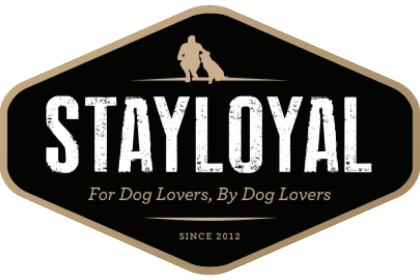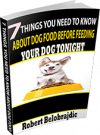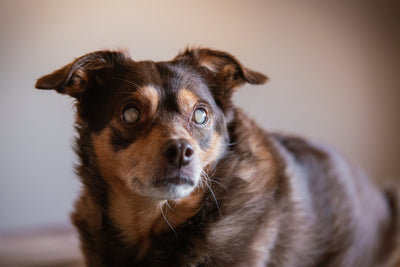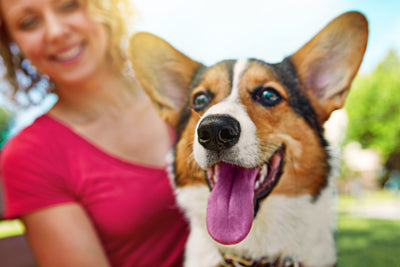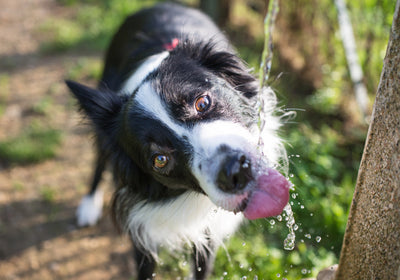Things We Do that Stress Dogs Out Part 1
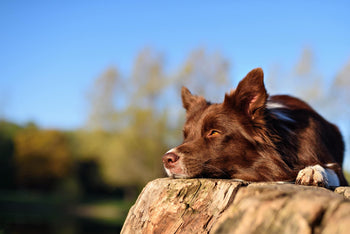
Stress is something humans often feel. In fact, most of us probably feel stress every day. For this reason, humans tend to think we have the monopoly on stress. After all, what does a dog have to feel stressed about right? They have a home, meals that come every day, a bed to lie in and someone to play with them, all for free. Sounds like a stress-free life to us. However, dogs do feel stress. And, often, without meaning to, we are the cause of that stress. In this first part, we look at things we do when training or working with our dog that can cause stress.
Changing the Rules
Dogs are creatures of habit and do best with routine. Notice how your dog always knows when it’s time for dinner or go on their potty walk? A huge stressor in training comes from when we change the rules. Maybe you decide your dog is allowed to sit on the couch, but then family comes over and you decide you don’t want him on the couch that day, so you yell at him to get off. The next day, you are inviting him up on the couch. And then the week after that, you decide he shouldn’t be on the couch. Inconsistencies like this cause stress – your dog never knows what he is allowed or not allowed to do.
Imagine being told to perform a task at work without being given any rules? You do the job, every day, but sometimes your boss yells as you that’s it’s wrong. And sometimes he doesn’t. But you don’t know why it’s wrong. You can see where the stress of not understanding the rules comes into play. And while you can go and ask your boss what is going on and what is the right way, your dog can’t ask you. Decide on the rules before you start training and keep them the same. (You will also find training much easier this way!)
Changing the Cues
In the same vein as changing the rules, changing the cues is also stressful to a dog. Remember, they do not speak English. It takes a dog a long time to figure out that noise you are making is related to him doing or not doing a certain behavior. The most common example of this is Down and Off. Let’s say you use Down when you are wanting your dog to stop jumping up, but then start saying Off, and expect your dog to stop jumping, you are going to have a very confused dog. Later, you say Down and expect your dog to do a lie down. Now he is even more confused. And Stressed.
What happens if you say something different but expect the same result? You get frustrated, maybe start repeating it, raising your voice, while your dog’s stress level raises as he frantically tries to figure out what you are expecting him to do. Pick cues your entire family can remember and keep them the same. Putting the list on the fridge is a great way to ensure consistency!
Restricting Instincts and Stress
As an animal, your dog has instincts that are born into her. Things like sniffing, chasing, barking, and chewing – these are “dog” things. It’s in their nature. Unfortunately, these are the very things we humans try and stop our dogs from doing, which can cause stress. While we do have to train our dogs to not bark at everything, or to chase the cat, giving them outlets for these instincts is important to have a stress-free dog that is not destructive. Take him or her out on walks where you allow him to sniff (you can even put it on a cue so he knows when it’s okay to take the lead and go where his nose goes). Let him chase a Frisbee and give him a meaty bone to chew on. Otherwise, your stressed out and bored dog will find his own outlets….and that will cause you stress.
Pulling on Leash
We teach our dogs to not pull on the leash, but then we do it ourselves. Imagine someone having you by the wrist, or the neck, and constantly tugging at you. Now imagine you are trying to find a spot to go to the bathroom while they are doing it! Yes, this will definitely cause stress. Instead, get your dog’s attention if you need to move on by saying her name or a cue like “Let’s Go.” Remember dog’s like rules and consistency. If he can’t pull, neither can you.
Yelling No
Humans love the word “No.” In fact, for many children it’s one of the first words they learn. However, to a dog, a human yelling No, body bent over them, often pointing a finger, is a stress-inducing action that gives the dog no clear idea of why we are doing it. Instead, it triggers a stress response that humans mistake for the "guilty dog" look, making us think our dog knows what it did wrong. So, we use No more. The reality is that the guilty dog look is a HUGE stress signal made up of several fear/anxiety signals and it’s caused by what you are doing, not by whatever your dog was doing to cause you to react.
Instead, if you see your dog doing inappropriate behavior, make sure it’s not being reinforced (say being petted when jumping up or getting food off the counter) and then redirect your dog to a behavior that does get reinforced – for example asking for a lie down and then petting them or asking for a sit stay while you eat and then giving them praise or their own dinner as a reward. Dogs are opportunists and repeat behaviors that get them what they want. You can completely remove the stress-inducing No from your relationship with your dog and actually have a better-behaved canine because of it.
It’s important to note that not all of these are stress triggers for every dog – just like humans, each dog has their own stressors. However, realizing that stress could be there is a good first step. Pay attention to your dog’s body language and make changes to your routine if you notice the following stress/fear/anxiety signals:
· Ears out and/or back (depending on their natural position)
· "whale eye" (showing the whites of their eyes)
· Bulged out eye
· Cowering and/or shaking
· Panting
· Licking the lips
· Furrowed brows
· Slow movements
· Yawning
· Won’t eat
· Pacing
· Hypervigilant (looking in many directions at once)
If you see your dog doing any of these, it’s time to change up your habits to make your dog more comfortable, which will result in a better relationship with him.
